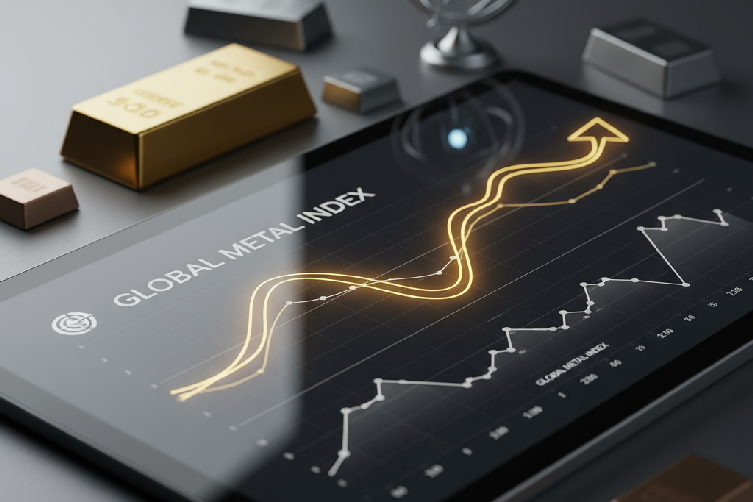Which Metal is Best for Trading?

Trading metals is a key part of the commodities market. It draws in all sorts of investors, from seasoned pros to beginners looking to spread out their investments. Metals have long been seen as a stable and profitable choice, providing a buffer against inflation and economic ups and downs.
The secret to successful metal trading is choosing the right metal, understanding market trends, and using smart trading strategies. This article will explore the top metals for trading, looking at their unique features, past performance, and investment potential.
Types of Metals for Trading
Metals mainly fall into two groups: precious metals and industrial metals. Knowing the difference helps traders make smart choices based on their investment goals and what’s happening in the market.
Precious Metals
These are rare, natural metals with high economic value. You’ll often find them in jewelry, coins, and as a way to store wealth. The most commonly traded precious metals include gold, silver, platinum, and palladium.
Industrial Metals
Industrial metals are widely used in manufacturing and building because of their physical properties and how easily available they are. Think copper, aluminum, nickel, and zinc. These metals are crucial for the global economy and are tightly linked to industrial and economic growth.
Gold: A Timeless Investment
Gold has symbolized wealth and power for centuries, used as currency, jewelry, and a store of value. Its unique qualities, like resisting corrosion and tarnish, make it highly valuable. Historically, gold shines during economic tough times, acting as a safe haven for investors.
Market Trends and Price Volatility
Gold prices react to many things: global events, economic data, and central bank decisions. When the economy is uncertain, gold prices usually go up as investors seek safer assets. Conversely, in stable times, gold prices might drop as investors move to assets that offer higher returns.
Pros and Cons of Trading Gold
Here’s a quick look at why traders choose gold:
- Pros:
- Cons:
- Advantages:
- Disadvantages:
* Safe Haven Asset: Often seen as a secure investment during economic instability.
* Liquidity: The gold market is large and very active, making it easy to trade.
* Inflation Hedge: Gold tends to hold its value well during inflationary periods.
* Price Volatility: Gold prices can swing quite a bit due to many influencing factors.
* No Yield: Unlike stocks or bonds, gold itself doesn’t generate income.

Case Study: Gold’s Performance During Economic Downturns
During the 2008 financial crisis, gold prices soared because investors were looking for safe assets. From September 2008 to September 2011, gold prices climbed by about 100%. This clearly shows its role as a safe haven when the economy is in turmoil.
Silver: The Versatile Metal
Silver has both industrial and investment uses. It’s found in many industries like electronics, solar panels, and medical devices, thanks to its excellent conductivity and antibacterial properties. Plus, investors love silver for its lower price compared to gold, offering an easy way for new traders to get started.
Price Movements and Volatility
Silver prices are usually more volatile than gold’s. This is due to its dual role in both industry and investment. Industrial demand can significantly affect silver prices, making them sensitive to economic cycles. Also, silver’s smaller market size compared to gold can lead to bigger price swings.
Advantages and Disadvantages of Trading Silver
Consider these points when trading silver:
* Affordability: Silver is more budget-friendly than gold, making it accessible to smaller investors.
* High Demand: Its industrial uses ensure a steady need for silver.
* Diversification: Adding silver can help spread risk within a precious metals portfolio.
* High Volatility: Silver prices can experience significant ups and downs.
* Storage and Transportation: Physical silver needs secure storage and can be bulky.
Case Study: Silver’s Response to Technological Advancements
The growth of renewable energy, especially solar panels, has boosted the demand for silver. Between 2010 and 2020, silver use in photovoltaic cells increased dramatically, helping push prices up. This demonstrates how new technology can drive silver demand and affect its value.
Platinum: Rare and Industrial
Platinum is one of the rarest precious metals. It’s mainly used in industrial applications such as automotive catalytic converters, jewelry, and electronics. Its scarcity and diverse uses make it a valuable asset for trading.
Historical Price Trends and Market Dynamics
Platinum prices are heavily influenced by industrial demand, particularly from the auto industry. Historically, platinum has traded at a premium to gold because of its rarity. However, economic downturns and shifts in industrial demand can significantly impact its prices.
Leave a Reply